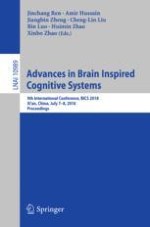2018 | OriginalPaper | Buchkapitel
Statistical Analysis Driven Optimized Deep Learning System for Intrusion Detection
verfasst von : Cosimo Ieracitano, Ahsan Adeel, Mandar Gogate, Kia Dashtipour, Francesco Carlo Morabito, Hadi Larijani, Ali Raza, Amir Hussain
Erschienen in: Advances in Brain Inspired Cognitive Systems
Aktivieren Sie unsere intelligente Suche, um passende Fachinhalte oder Patente zu finden.
Wählen Sie Textabschnitte aus um mit Künstlicher Intelligenz passenden Patente zu finden. powered by
Markieren Sie Textabschnitte, um KI-gestützt weitere passende Inhalte zu finden. powered by
